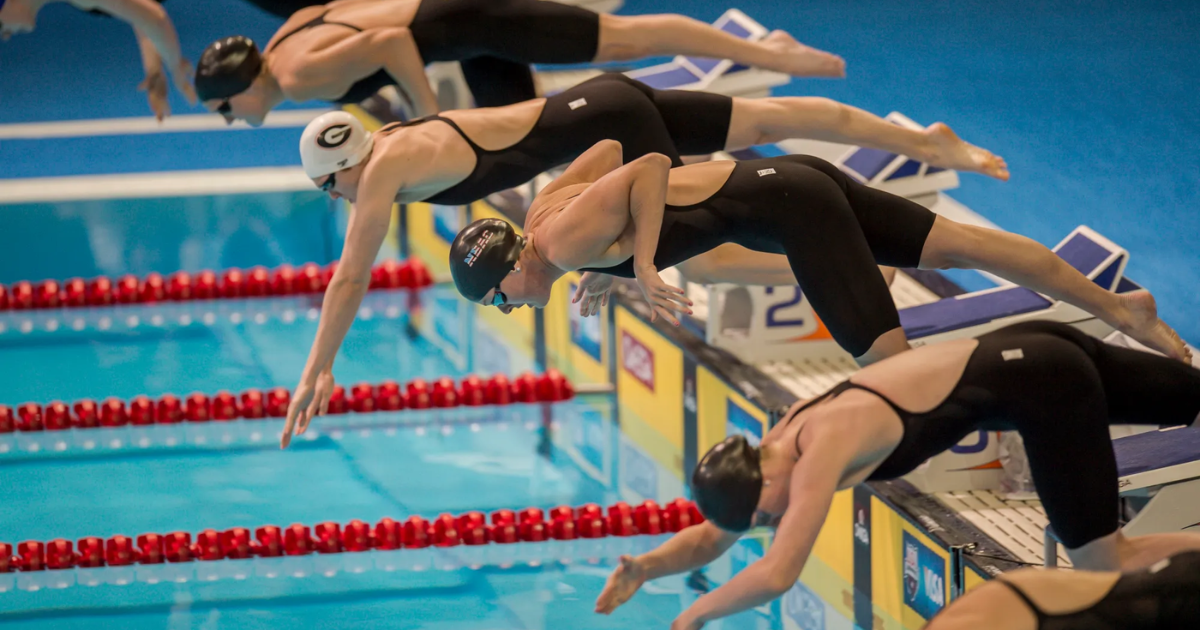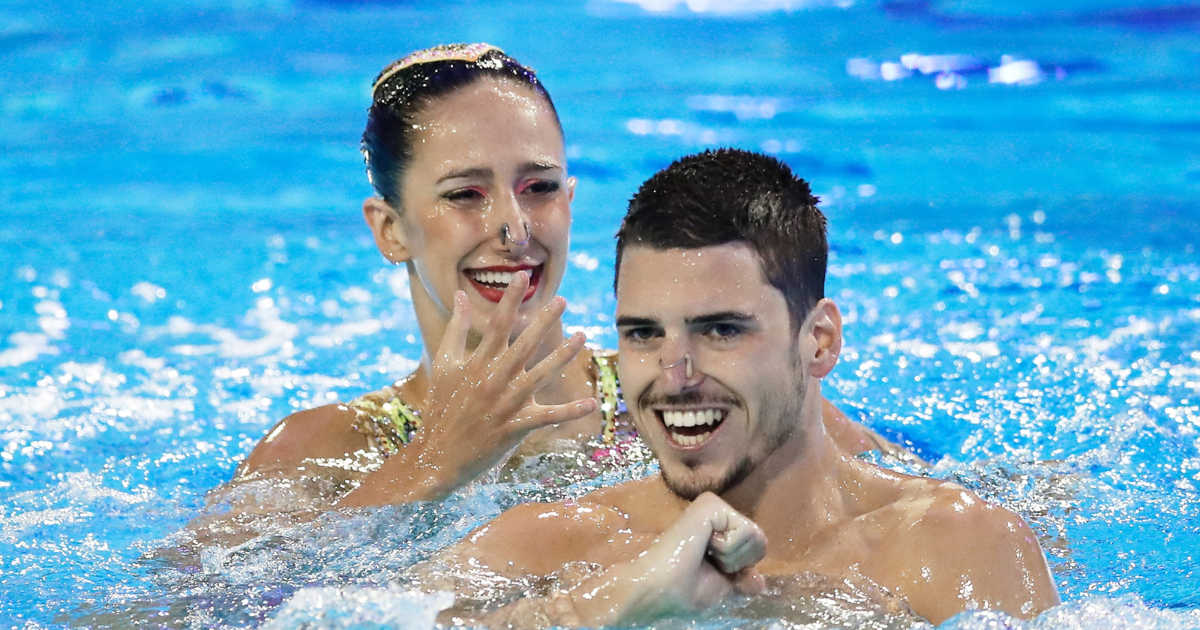Artistic swimming, formerly known as synchronized swimming, has captivated audiences worldwide with its grace and precision. This unique sport combines elements of dance, gymnastics, and swimming, requiring exceptional strength and coordination. Its inclusion in the Olympics has brought it greater visibility and respect. As we explore the fascinating world of artistic swimming at the Olympics, we’ll delve into its history, key moments, and the athletes who have made a mark on the sport.
The Evolution of Artistic Swimming in the Olympics
Artistic swimming made its Olympic debut in 1984 in Los Angeles. Initially, it featured only solo and duet events, showcasing the skill and artistry of individual athletes. The sport has since evolved, and team events were introduced in the 1996 Atlanta Games. This evolution has allowed for more complex and synchronized routines, highlighting the teamwork and coordination required in artistic swimming. Today, the sport continues to grow, attracting new fans and aspiring athletes.
Key Milestones in Olympic Artistic Swimming
One of the most significant milestones in artistic swimming was the introduction of the team event. This change brought a new level of complexity and excitement to the sport. Another key milestone was the rebranding from synchronized swimming to artistic swimming in 2017. This rebranding aimed to better reflect the sport’s artistic and athletic components, helping to increase its popularity and recognition. These milestones have played a crucial role in shaping the sport we see today.
Training and Preparation for Olympic Artistic Swimming
Training for artistic swimming at the Olympic level is incredibly demanding. Athletes undergo rigorous physical conditioning, spending hours in the pool perfecting their routines. They also focus on strength training, flexibility, and cardiovascular fitness to perform complex movements with precision and grace. Mental preparation is equally important, as athletes must remain focused and composed under the pressure of competition. This holistic approach to training ensures that they are at their peak performance during the Olympics.
The Role of Choreography in Artistic Swimming
Choreography is a vital component of artistic swimming. Coaches and athletes work together to create routines that combine technical difficulty with artistic expression. These routines are performed to music, and the synchronization with the beat is crucial for scoring. Innovative choreography can set a team apart, making creativity a key element of success. The best routines tell a story, captivating both judges and audiences with their artistry and execution.
Iconic Athletes in Olympic Artistic Swimming
Several athletes have left a lasting impact on Olympic artistic swimming. One of the most iconic is Esther Williams, whose performances helped popularize the sport in its early days. More recent stars include Russia’s Natalia Ishchenko and Svetlana Romashina, who have dominated the sport in the 21st century. Their exceptional skills and numerous gold medals have set a high standard for future generations. These athletes have not only achieved personal success but have also elevated the sport’s profile globally.
The Influence of Coaching and Teamwork
Behind every successful artistic swimming team is a dedicated coach. Coaches play a critical role in developing routines, improving technique, and fostering team cohesion. Effective communication and trust between athletes and coaches are essential for success. Teamwork is also paramount, as athletes must work in perfect harmony to execute their routines. The bond and understanding between team members can make a significant difference in their performance and results.
Judging and Scoring in Olympic Artistic Swimming
Judging in artistic swimming is complex and multifaceted. Judges evaluate routines based on technical skill, artistic impression, and synchronization. Each routine is scored on elements like lifts, throws, and transitions, with penalties for errors or lack of synchronization. The artistic impression score considers the creativity, choreography, and overall presentation of the routine. Understanding the scoring system is crucial for athletes as they strive to perfect every aspect of their performance.
Controversies and Challenges in Judging
Despite efforts to ensure fairness, judging in artistic swimming can sometimes be subjective. Controversies have arisen over perceived biases and inconsistencies in scoring. Efforts are ongoing to improve transparency and fairness in judging, including the use of technology to aid evaluation. These challenges highlight the need for continual refinement of the judging process to maintain the sport’s integrity. Ensuring fair and unbiased judging is essential for the credibility of artistic swimming.
Read More:
The Future of Artistic Swimming in the Olympics
The future of artistic swimming in the Olympics looks promising. The sport continues to evolve, with new rules and innovations enhancing its appeal. Increased global participation and interest suggest that artistic swimming will remain a staple of the Olympic Games. Efforts to promote the sport at the grassroots level are also paying off, with more young athletes taking up artistic swimming. As the sport grows, we can expect to see even more spectacular performances and tighter competitions in the years to come.
Expanding Opportunities for Artistic Swimmers
Expanding opportunities for artistic swimmers include increasing the number of events and categories in the Olympics. There is also a push to include mixed-gender events, reflecting the sport’s evolving nature. These changes aim to provide more athletes with the chance to compete at the highest level. Additionally, technological advancements in training and performance analysis are helping athletes reach new heights. The future holds exciting possibilities for the sport and its participants.
Conclusion
Artistic swimming at the Olympics is a captivating blend of athleticism and artistry. Its evolution and growth reflect the dedication of athletes and coaches who push the boundaries of what is possible. As we look to the future, the sport promises to continue dazzling audiences with its grace and precision. The ongoing development of artistic swimming will undoubtedly bring new talents and unforgettable moments to the Olympic stage. This unique sport, with its rich history and bright future, remains a cherished part of the Olympic tradition.
FAQs
What was artistic swimming originally called?
Artistic swimming was originally known as synchronized swimming.
When did artistic swimming debut in the Olympics?
Artistic swimming made its Olympic debut in the 1984 Los Angeles Games.
Why was synchronized swimming renamed artistic swimming?
The name change aimed to better reflect the sport’s artistic and athletic components.
What are the key elements judges look for in artistic swimming?
Judges evaluate technical skill, artistic impression, and synchronization.
Who are some iconic athletes in artistic swimming?
Esther Williams, Natalia Ishchenko, and Svetlana Romashina are among the sport’s most iconic athletes.


